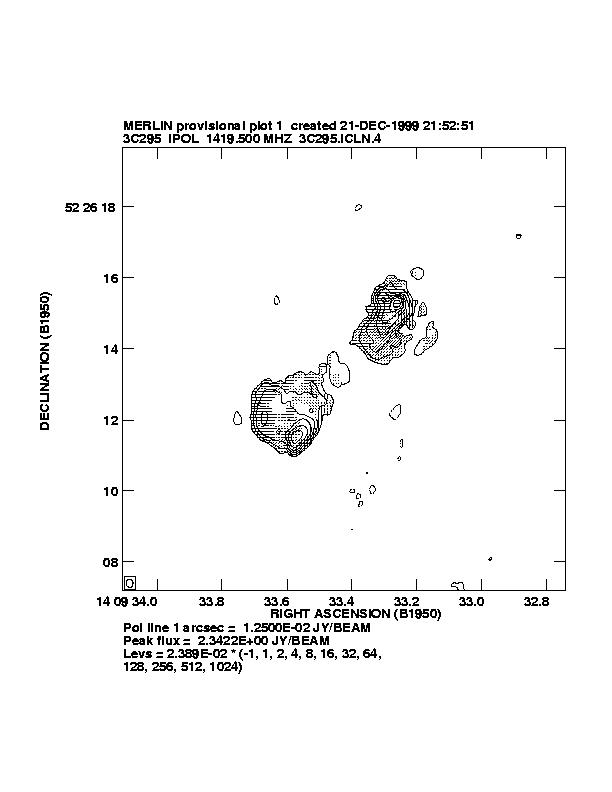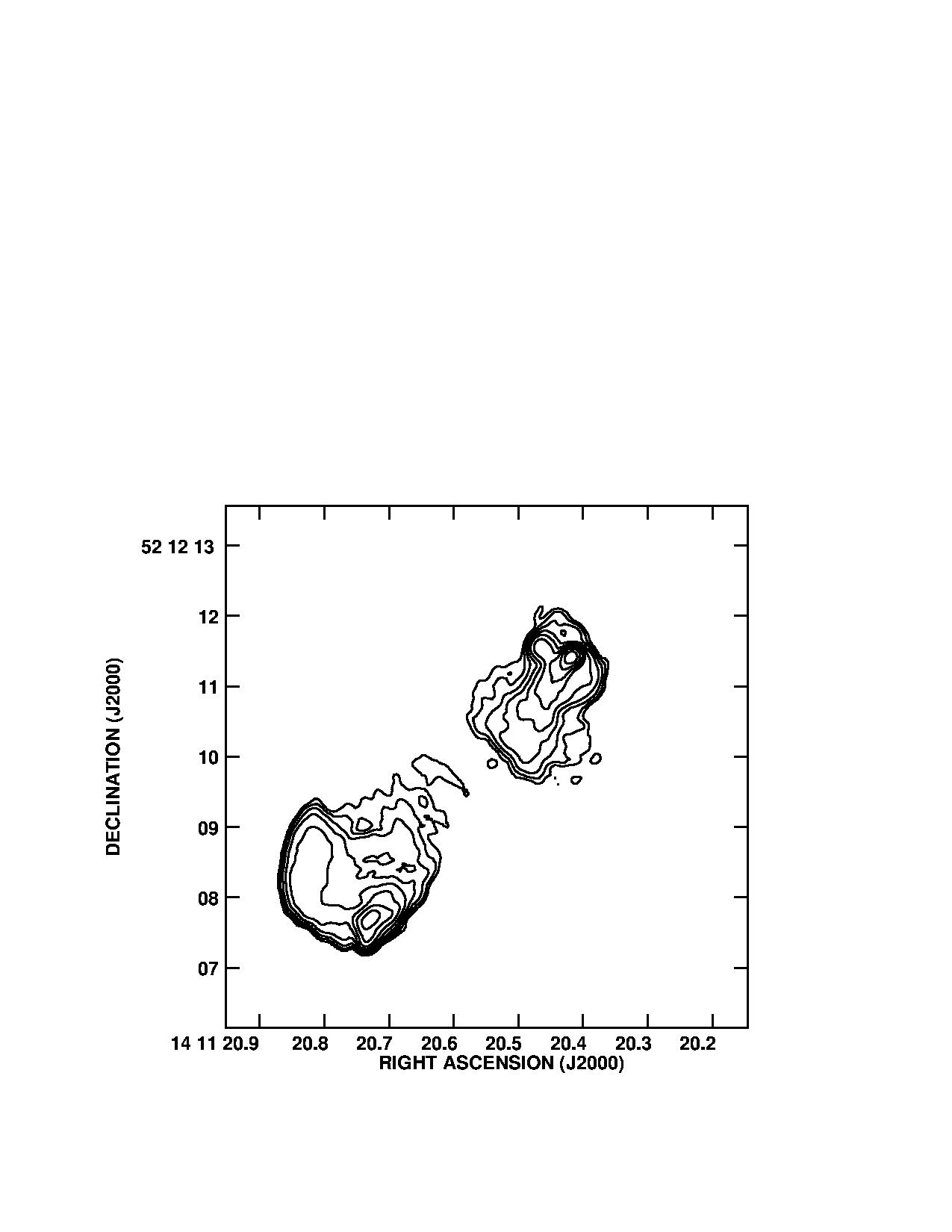

The list of time awards gives proposal titles in each semester.
We are in the process of calibrating all public-domain MERLIN continuum observations in a uniform manner. If you use MERLIN archive data please see the acknowledgement guidelines
More details about MERLIN can be found in the MERLIN User Guide.
A status page gives a summary on progress through the archive data. Here are some 1993 L-band archive images made by JBO work experience student Duncan Hook.
This Search Form lets you browse or query the archive for preview images and FITS files. You will need to register in order to obtain FITS files (email merlin_archive@jb.man.ac.uk). Preview images of target and phase-reference sources can be viewed or downloaded as FITS files. Plots of the visibility data, and the associated calibration are also available.
Customised images are available using the AstroGrid workbench MERLINImager. This (and the Visibility Data service) also use the ParselTongue scripting language developed by RadioNet to control the AIPS data reduction package.
Visibility data with optional calibration can be downloaded using the UVData Search Form. This can be imaged in e.g. AIPS or DIFMAP or you can repeat all or part of the calibration (in the latter case you may find the MERLIN AIPS Procedure useful).
A supervised pipeline is used for uniform and reliable calibration and production of a 'reference image'. The web page for each source found using the archive search form gives links to relevant data processing information and you can email merlin_archive@jb.man.ac.uk for more details
These images should have absolute flux density scales accurate to 5% and the phase referencing process ensures that the map is aligned with the ICRF to within 20 mas.
The nature of sparse-aperture interferometer arrays like MERLIN means that such images can often be improved. You can download the calibrated data, edit it more carefully if required, and tailor the deconvolution process to the individual image. For the brighter sources, the pipeline does a single phase self-calibration: further cycles of self-calibration will undoubtedly improve the final image. In some cases the calibration from the reference source can also be improved. For this purpose, a multi-source file containing the target and calibrators can be downloaded from the Visibility Data service (see above).

|

|
| Reference Image: 3C295 1.6 GHz | Best Image (courtesy J.P. Leahy JBO) |
Images covering a wider field than displayed in the reference maps can be made if the multi-channel visibility data are used.
The archive also contains images and data for the phase reference sources, which may be of interest themselves. The same search form returns details of these sources.